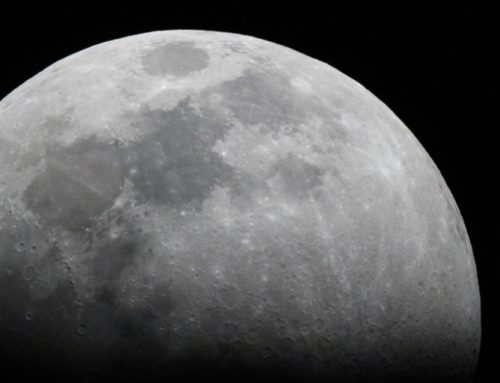This is part 1.
The properties of telescopes are often presented in a confusing way. In fact, it is simple if you keep in mind what a telescope is really doing.
Fundamentally, all objects being viewed in the sky are at infinity. In other words, all the light rays from any point are parallel rays by the time they reach us. Just how parallel is this?
The figure above illustrates how we can estimate the angle between the most distance rays coming from a point object, like every star.
The angle, a, is given by
Given how small this angle is, tan(a) = a, so,
For example, if the telescope has an aperture, d, of 1 m, a large telescope, and the distance, D is to the moon, about 400,000 km, or 4 x 108 m, the angle between the most diverging light rays coming from the same points on the surface of the moon is about 10-8 radians, like I said, parallel rays.
It’s even more extreme if we look at the nearest star, a distance of a little more than 4 light years. The divergence angle can be easily estimated, recalling that there are about p x 107 seconds in a year and the speed of light is 3 x 108 m/sec.
The distance, D, in meters, is 4 x p x 107 x 3 x 108 = 4 x 1016 meters. The angle between the most divergent light rays is about 10-16 radians, like I said, parallel rays.
Every point in the sky is emitting parallel light rays to us. When we see two points with some separation across the sky, the separation we see is the angle between them. From just a causal glance, we have no information about their actual spatial separation, only their angular separation, measured in radians, degrees, arc-minutes, or arc-seconds.
The purpose of the optics in a telescope, whether a lens based refractor or a mirror based reflector, is to translate an angular separation in the sky into a spatial separation on the focal plane where the detector is. Every ray parallel to the central optical axis, gets focused to the same point, the focal point, located on the focal or image plane. This is illustrated as Figure 5.2 in Hale Bradt, my first Astrophysics professor’s book, Astronomy Methods, reproduced here:
There are only two essential principles of a telescope that are important about imaging:
- Every parallel ray gets focused together to the same point on the focal plane, located a distance equal to the focal length, FL
- Every ray that goes through the center of the optical axis goes straight through
With these two principles, we can see how any lens or mirror really just converts an angular separation in the sky into a spatial separation on the focal plane.
Again, referring to Hale Bradt’s book, in Figure 5.1 a and b, shown below, we see that the an angular separation in the sky of an angle, a, gets translated into a distance, s on the focal plane given by
s = FL x tan(a)
where
s = the length of the image on the focal plane in mm
FL = the focal length of the lens or mirror in mm
a = the angular size of the object
It’s useful to note that for an angle of 5 degrees, which is about 0.1 radians, roughly the size of your palm held at arms length, the tan (0.1 radians) = 0.1003. In other words, for angles less than 5 degrees or 0.1 radians, the tangent of the angle = the angle in radians, accurate to about 0.3% or better.
Based on this observation, we can approximate the above expression to say that an angular dimension in the sky, measured in radians, is translated into a spatial dimension on the image plane as
s = FL x a
The focal length of the telescope is a direct and the sole measure of the image size of the sky object. The longer the focal length, the larger the object size on the focal plane. It has nothing to do with the aperture size or anything else.
If the object is a diffuse nebula, with some spatial extent, the focal length is a direct measure of how large it will appear on the image plane.
We usually have an idea of the angular size of an object in terms of how many degrees it is. We can convert this into radians as;
angle [radians] = p/180 x angle[degree] = 0.0174 x angle[degree]
For an object that is 1 degree in angular size, its spatial size will be 0.0174 mm per mm of focal length in the imaging system. If it is a 1000 mm focal length, the 1 degree angular size object will have a spatial extent of 17.4 mm on the focal plane.
The larger the focal length, the greater the magnification of angular size into spatial length on the image sensor. In this respect, the focal length is simply a translator of angular length into spatial size on the sensor.
The moon’s angular size, for example, varies between 29 and 34 arc-minutes depending on the date. This is 0.48 to 0.57 degrees, or 0.0084 to 0.0099 radians. In a telescope with a 1500 mm focal length, the spatial size of the moon’s image on the focal plane would be
s = 1500 mm x 0.0084 radians = 12.6 mm to
s = 1500 mm x 0.0099 radians = 14.85 mm
My Canon XSI camera has a CMOS sensor that is 22.2 mm x 14.8 mm. Even at its closest, the entire image of the moon should fit within the image plane of the detector.
As an example, here is a picture of the moon taken through the SCT C6 telescope with the Canon XSI attached at prime focus. It just fits in the field of view, as expected.










